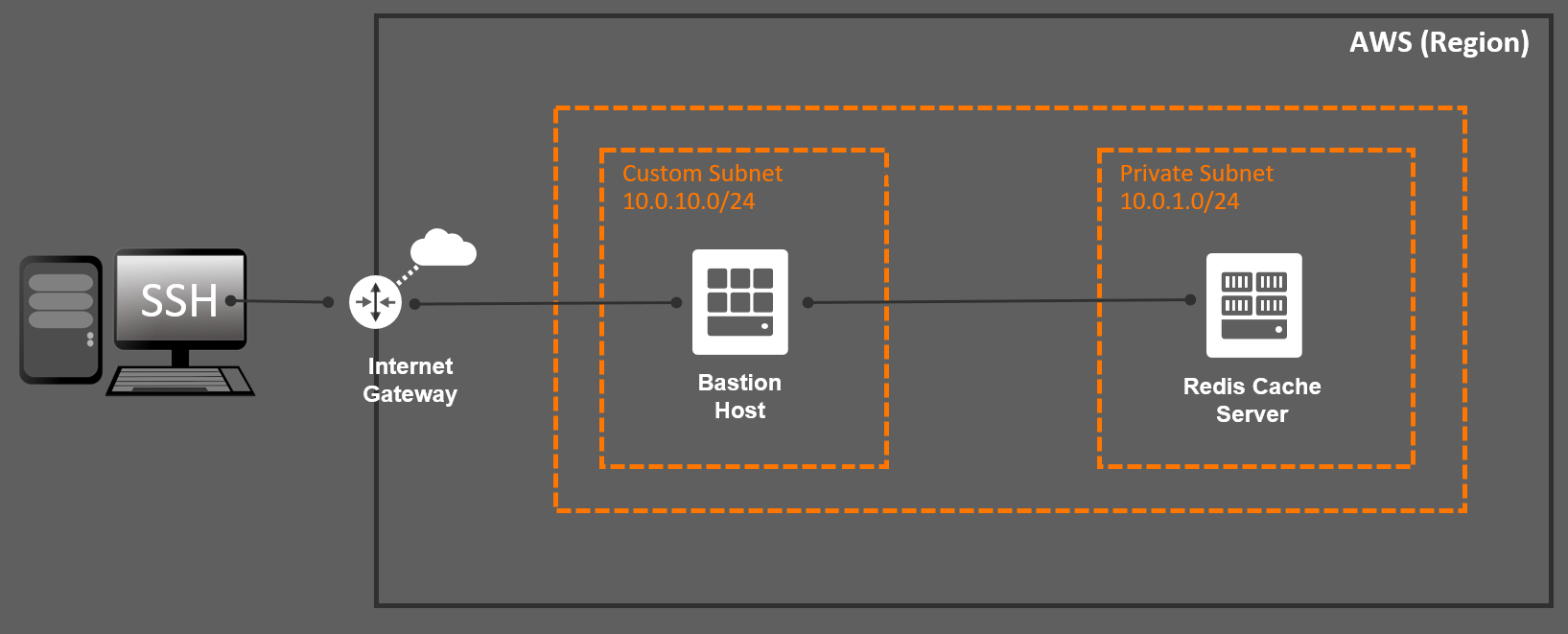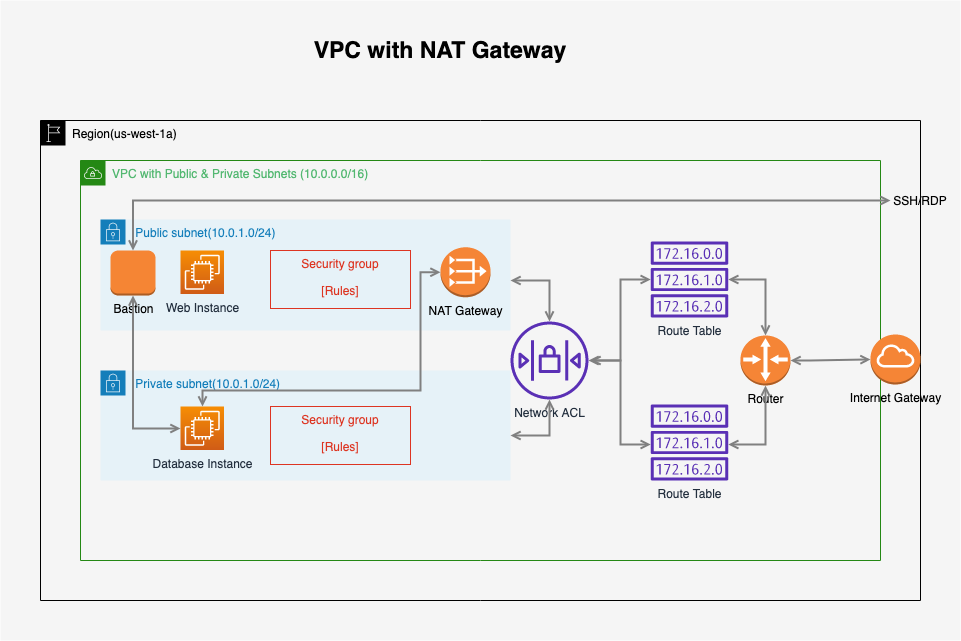

If you’re used to deploying AWS resources by writing CloudFormation templates, stop doing that and use CDK instead.

#BASTION HOST AWS INSTALL#
But if you can’t (or don’t want to) install the agent directly on the private host, you can still set up a bastion running the agent. You can even potentially cut out the need for the bastion host! SSM works by installing an agent on the private host you’re trying to connect to. This would be a moot point if the whole world were on IPv6 already, but we’re not there yet.ĪWS Systems Manager ( SSM), on the other hand, eliminates all of these drawbacks by cutting out the need for SSH entirely. Because of the limited IPv4 address space, this means either using an elastic IP or employing some other shenanigans to share one with other services. Just a little more overhead.įinally, the SSH host needs a public IP address. Somebody has to maintain a list of authorized users, and/or control access to a shared key. It’s not a big deal, but it does add some overhead.Īnother drawback is SSH access control. You can mitigate this by tightly controlling the SSH host’s security group, limiting connections to known clients (i.e. One is that the SSH host must be exposed to the Internet. This is a feasible solution, but it has some drawbacks. Then you can connect to the database locally through the SSH tunnel. When a connection to a private service is needed (for example, a database), you can SSH into this host, with a port forwarded to the database. The way this usually goes is that a bastion is set up to run a secure shell (SSH) service, accessible by the public Internet. But VPNs tend to be complicated and potentially expensive, making bastion hosts a popular alternative. AWS remote database management is usually handled by either a VPN or a proxy bastion host. But you may still need to manage these services by connecting from your own computer.

In that case, the SQL client would connect to Localhost and not use the SSH connection settings.Some AWS services have no need to be exposed to the public Internet. There is no need to run a separate SSH tunnel, although this can be done. Check Connect with SSH and more inputs will appear to add in the SSH Bastion credentials to create an SSH tunnel to connect to the Postgres database.Īdd the private key path and EC2 credentials when connecting with SSH. Enter the RDS connection information as shown in the Arctype documentation. In a SQL client like Arctype you can combine the information from the previous steps to connect to the Postgres database. Connect with SSH to your Postgres Database Go into the RDS console or your credential store to retrieve this information.Ĭheck out our tutorial on connecting to Postgres in AWS here to navigate the AWS Console and find your connection information. With the SSH server hostname, user, and key pair you now need connection information for the database.

You may be using an authentication service which has created a user for you on this instance. Ensure the name of this key matches the key associated with the instance.Ĭheck that the local key pair and the instance key pair match.įor Amazon Linux Instances, the default username is ec2-user. You will need the key pair for the instance on your computer, with read only permissions chmod 400 ~/.ssh/getarctype.pem. Locate the SSH server hostname, labeled Public IPv4 DNS. AWS recommends you only allow your IP address to connect over SSH.Ĭheck the inbound connections for the Bastion server. Sometimes called a bastion server or bastion host, this is an EC2 Instance which allows your machine to connect to it. Now your database instance is secured behind your private cloud network and your bastion server is accepting SSH connections. The VPC of the RDS instance should be the same as the VPC of the EC2 Bastion Server above (security group name not shown). Add a security group which will allow all connections to the instance within the VPC as below. However, now your instance is completely closed off. Your database instance may have previously had some other configuration, but now it should be Not Publicly Accessible. Just before you launch the instance, you should ensure that you have access to the SSH key that is associated with it. In the example below, the developer's machine has an IP of 255.255.255.255. For example, you can look up your machine's IP address and allow SSH connections to this instance from it. This must allow connections from the outside internet to the bastion server. Take note of the Virtual Private Cloud (VPC) network it is created in.Ĭonfigure the security group. Create the smallest EC2 instance available.


 0 kommentar(er)
0 kommentar(er)
